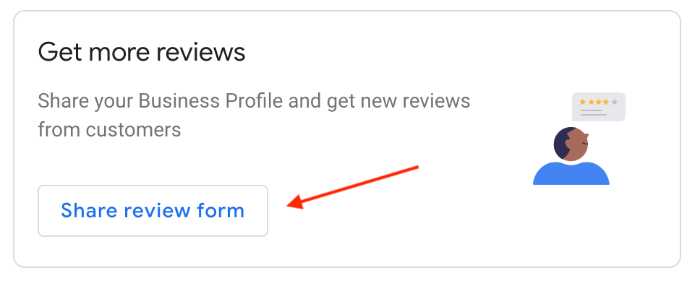There’s no doubt that Google reviews are a key marketing tool for local businesses. 63.6% of consumers report that they use Google reviews to find businesses and learn about them, and reviews significantly affect your Google and Maps ranking.
While it can be tempting to solely focus on achieving a 5-star rating, the volume of online reviews more tangibly affects SERP ranking. Results from a recent SEMRush study revealed that once a profile achieves a 4.1 star rating, Google’s map pack ranking comes down to a profile’s number of reviews.
In short? Local businesses can boost their Google ranking by collecting as many customer reviews as possible.
In this guide, we’re sharing 11 strategies to get more Google reviews (and one way to not get them).
Before jumping in, let’s quickly go over Google’s Terms of Service for soliciting reviews. Google has a few key rules for collecting customer feedback, and it’s important to keep them in mind when designing a review strategy for your business.
Google’s Terms of Service For Reviews
Don’t discourage negative reviews
Google wants to encourage fair and impartial reviews of your business. Don’t actively discourage or prohibit unhappy customers from leaving negative reviews.
Don’t offer money in exchange for reviews
Keep money out of the review process. It is ok to offer a customer a reward or gift after they’ve written a review as a “thank you”, but don’t use monetary rewards to incentivize customers to write business reviews.
Don’t solicit reviews from customers in bulk
Don’t request reviews from your entire customer base at once, or “in bulk”. We’ll cover details and best practices on this later. A large influx of reviews within a small timeframe could trigger Google to review your account.
These are just a few of Google’s rules for collecting online reviews. For more information, check out Google’s full guidelines here.
With these guidelines in mind, how can your business ramp up your review marketing strategy?
Here are 11 ideas:
Create shortcut links to share with customers
Want more online reviews? Make it easier for customers to write them by creating a direct link to your Google review profile. Rather than having to search for your business online and figure out how to leave a review, customers can click the direct review link and reach your Google business profile instantly.
This is especially helpful if you have customers who are always on the go and might not have time to search for your business. Or if your business has multiple locations and you want to make sure your customer leaves a review for the correct location.
To grab the personalized business review link, start by heading over to your Google Business Profile Manager page. Click the “Home” tab, then find the card that says “Get more reviews”.

Then simply click the “Share review form” button. A popup will appear with your business’ shortcut link. Copy this link and share it with customers via email, text message, in-person, or through whatever channel you prefer.
If you need to further shorten the review link, paste it into a link shortener tool like Bitly. Not only will this generate a simpler link to share with customers, but you can use the tool to track the number of visits to a particular link. This can help you track where your reviews are coming from, measure campaign performance, and more.
Add Google Reviews to Your Website
If your business has a marketing website, connect it to your review collection efforts.
Add a CTA
Add a Call to Action section on your website, asking customers to leave their feedback! Create a button with a direct link to your Google business profile.
Showcase Your Reviews
Use your website to showcase your existing positive Google reviews, which may inspire visitors to leave their own review. Many review management companies, like Trustmetrics, provide built-in website widgets. This allows you to populate your website with dynamic Google review widgets in just a few clicks.

Train employees to ask for reviews in-person
Start training your employees to request more business reviews during positive interactions with customers. While you want to avoid pressuring customers, a simple review request can go a long way after a positive customer experience. A full 76% of customers who are asked to leave a review go on to write one.
Additionally, make sure your staff understands why collecting Google reviews benefits the business. Explain how reviews boost your business’s bottom line and improve search engine optimization.
By looping employees into the strategy side, they’re more likely to take ownership and be proactive about collecting more reviews. Businesses with engaged employees are 21% more profitable than competitors.
You may want to even consider setting a “review goal” as a team. When the target is reached, reward your staff with a gift, time off, or other way of showing appreciation.
If your staff isn’t sure about how to politely ask customers for a review, it may be helpful to provide scripts to work off of. For example:
“Thanks so much for coming in today! I’m so glad you had a good experience. If you don’t mind, we’d really appreciate it if you could drop a review on Google for us. Here’s the review link. “
Create a QR code
A QR code is a URL shortcut to your Google business profile that customers can scan with their smartphones. The COVID-19 pandemic re-popularized the use of these codes, so almost 45% of consumers are now familiar with how to use QR codes.
You can create a review link QR code for free using various website generators, then place the code on receipts, store windows, product packaging, and more.
Here’s an example of a QR sticker you might place near a cash register:

QR codes make it even easier for customers to reach your business review page. Rather than typing in a link to their search bar, they simply scan the code with their smartphone camera and are immediately directed to the right page.
“Leave a Review” cards
Not every customer will write a review on-the-spot or remember to write one once they get home. Create “Leave us a Review” cards with a QR code or link that customers can take home with them. Display them near checkout, or package them in with shipped products.

Ask for Reviews via email
Email marketing is still one of the most effective methods of marketing campaigns, with an average return of $42 for every dollar spent. If your business collects customer email addresses, consider emailing them to generate new reviews. There are a couple of ways to do this:
Run a Campaign
Select a group of your most active, recent customers and email them requesting a review.
You may recall that Google prohibits businesses from soliciting reviews “in bulk”. While Google does not specify how many messages constitute “in bulk”, it’s better to err on the side of caution to avoid penalties. If running a campaign with a large email list, try sending it out in batches: say, 50 emails per week.
Be sure to also follow best practices when setting up your email list to preserve your email sending reputation. Only email customers who have agreed to receive emails from you and have interacted with your business in the past six months. Ensure that your email includes an “unsubscribe” link at the bottom so customers can opt-out of future emails.
Set up email automation
Rather than a one-time email campaign, set up automated, transactional emails to request reviews from customers. For instance, create email triggers to automatically email a customer:
- A week after their product is delivered in the mail
- After completing an in-store purchase
While email automation may require a bit more time to configure, once the system is up and running it requires very little effort to maintain. By emailing customers within two weeks of completing their transaction, your brand will still be top of mind.
Add a CTA to your email signature
Another way to use email? Simply add a review request Call to Action to your email signature.
If you regularly communicate 1-1 with customers via email, a personal email signature could look something like this:

If your brand primarily sends marketing emails to customers, add a Google review CTA to the footer of your next newsletter or promotional email.
Use social media
With over 3.96 billion users across all platforms, social media is one of the most effective ways to connect with your customers. Use your social accounts to share positive reviews and request feedback from your followers.
Reviews can be a powerful tool on your Instagram, Facebook, or LinkedIn account! 73% of marketers report that social media marketing has been effective for their business.
Create posts showcasing your best customer reviews, reminding followers that you value their feedback.

You can also create posts directly requesting reviews- sometimes all it takes is to ask.

Reach out to vendors and partners
Do you have a good relationship with suppliers or business partners? Ask them to write a review of what it’s like to work with your business.
According to Google’s Contributed Content Policy, current or former employees are not allowed to leave reviews about their experience of a business. This falls under their “conflict of interest” regulations. However, partners and suppliers are exempted and fair game! Reach out to anyone you work with professionally who would be willing to write a positive review of your business.
Show customers how to leave a review
Some customers may not provide feedback simply because they don’t know how to leave Google reviews. Depending on your client demographics, customers may struggle with how to navigate Google’s review system. Make it easy for them by offering clear instructions on where and how to leave a review. These instructions can take many forms, such as:
- A one-page sheet of instructions
- A link to a video tutorial
When creating review instructions, be sure to use clear-concise language and pictures where applicable.
Track metrics and set a target goal
Want to get more customer feedback? Set a specific goal of how many more reviews you’d like to achieve.
Sometimes it really is that simple. According to a recent study, small businesses that track metrics are 2x more likely to reach their goals.
Setting a goal will help to hold you and your team accountable and outline clear standards for success. Set tangible KPIs and targets to reach (for instance, 100 new reviews within the next 30 days), then stick to them. Provide incentives and rewards to your team when a target is reached.
What not to do: Buying Google reviews
Purchasing positive Google reviews may seem like a quick and easy method to gain more positive reviews. A quick Google search will return dozens of agencies and freelancers promising to generate hundreds of positive reviews for your business- often for just a few dollars.
However, this is one method you should avoid at all costs. Not only is it unethical, but it’s also against Google My Business’ policies and can get your listing suspended or removed entirely. Google has powerful tools to detect suspicious account trends, multiple reviews coming from the same IP address, and more. Purchasing fake reviews runs the risk of Google disabling your business listing entirely.
If that isn’t enough to deter you, note that undisclosed paid reviews are also illegal. In the USA and UK, the Federal Training Commission and Competition and Markets Authority have banned the purchase of fake reviews.
Conclusion
While it’s easy to focus on your business’s star rating on Google, don’t neglect the importance of review volume. Businesses with a minimum of 200 reviews generate twice as much revenue as their counterparts, and a greater number of reviews leads to higher Google search rankings.
Increasing review volume can be as simple as asking a customer in-person to leave feedback, or can require more planning like setting up transactional email automation. Choose a few of these methods to implement in your current marketing strategies, and measure the benefits to your business reputation and SEO.


